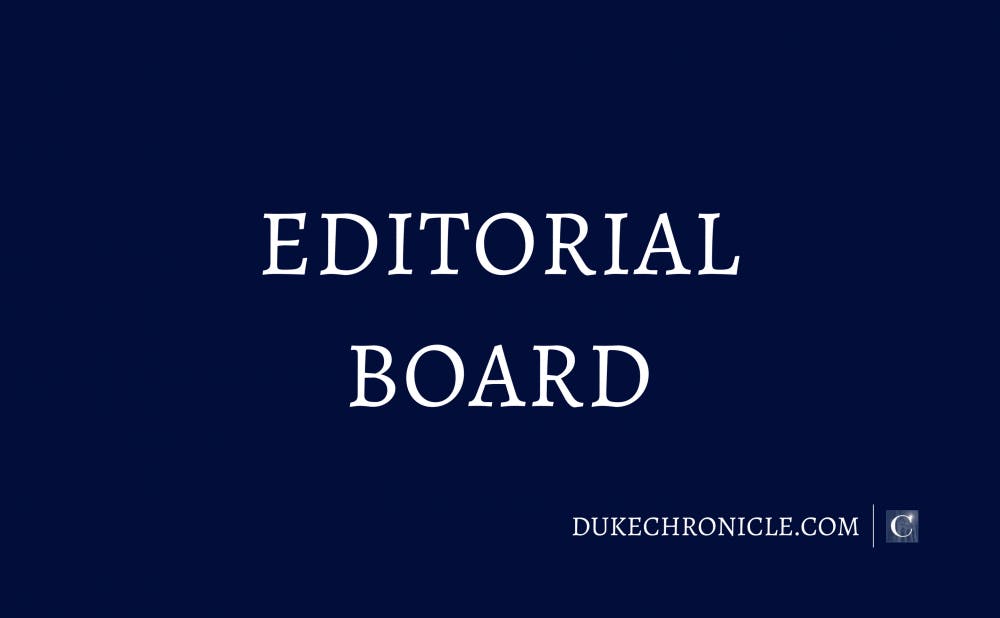With recent national headlines about Secretary of Education Betsy DeVos planning to deregulate for-profit colleges—a policy choice that would end Obama-era protections put in place after hundreds of these colleges were accused of “widespread fraud”—and campus news items like the reappointment of Dean of Undergraduate Admissions Christoph Guttentag (the administrator credited with drastically reducing Duke's admission rate), higher education accessibility continues to be a prominent topic of heated debate. However, these conversations often lack nuanced and historicized assessments of the hallowed grounds we praise as sites of scholarly production. The ills that plague prestigious campuses like Duke around the country can’t be discussed in earnest without understanding the intentions and values that birthed them.
When Duke started as a private subscription school in 1838, the initial vision of this university was far from the rhetoric of inclusivity and diversity touted today. It would be decades after founding for white women to be admitted as “full degree candidates” and even longer for the campus to desegregate—a process which began in 1963. Despite a brief period of offering free education for preachers in exchange for monetary support from the Methodist church, attendance at Duke has also been out of reach for the poor for most of its existence. As stated in a recent Chronicle opinion column, "higher education was never meant for the many. It was always meant for the few." However, what is often missed is that this exclusivity is not to be celebrated as proof of our merit as students. Artificial scales of worth—mechanisms informed by the familial wealth lottery more than any perceived god-given talent—are the uneven, rotting foundation on which praises of elitism sit. Students should, in fact, critically analyze gatekeeping at Duke—in both its past and present forms—as evidence of the intentional structures of violence and repression that serve as the scaffolding of higher education’s exclusivity.
While Duke certainly looks different than the classes of yesteryear and has made considerable strides toward diversity in the last three decades, it can’t help but be asked if efforts to expand accessibility into the university for some have truly been successful. What does it mean that the demographic makeup of the school is shifting if administration still hesitate to institute policies and support networks that serve their changing student body? How much is the university actually doing to grapple with the lingering ghosts of men who funded this school for the few while building their fortune off the exploitation of the rest? How much of this diversity is a result of true inclusion rather than tokenization?
As a New York Times investigation uncovered, Duke's purported robust diversity isn’t as simple as the university’s promises of inclusivity would have applicants believe. The socioeconomic disparities within the student body are telling: 69 percent of students come from the top 20 percent of richest families in the U.S, while only 3.9 percent come from the bottom 20. This elitism that characterizes Duke’s past and present necessitates abiding by the arbitrary, racialized and intentional economic factors that create impoverishment that keeps higher education out of the grasp of many. Ultimately, the separation between Duke students and "the unwashed masses," as the author tastelessly puts it in his opinion column, is an artificial one. Achieving status as an elite college student isn’t primarily a result of a student’s inherent worth; it is a result of interlocking factors of systemic economic, social and racial discrimination.
Prescribing solutions to this bind is a complicated task. It would be entirely reasonable to assert that universities as we know them are irredeemable and that placing faith in reform is chasing a optimistic vision of futurity that will never materialize. However, that leaves little for the few at universities around the country that have managed to defy all odds and are currently faced with temporary homes that refuse to protect them. Even if universities seem doomed to reproduce the inequities they were created within, that doesn’t render attempts to survive on their campuses moot. Small approaches that have been offered to try and change the exclusivity of colleges include actively resisting the idolization of the low acceptance rate and expanding class sizes, allowing more of the large applicant pool to access a Duke education and reputation. In terms of attempting to create a different kind of Duke that is more accommodating of the racially diverse student body it claims to value, policy changes have been proposed by student advocacy organizations as starting points. Of course, these solutions only scratch the surface of this deep reaching problem, but it’s a start.
As it presently stands, the fact that Duke is an elite institution that stems from and perpetuates oppressive institutions is unavoidable, but that doesn’t mean we should, by any means, embrace this reality or complacently accept it. Regardless of how untenable universalized higher education or entirely reimagined structures of learning might seem now, those ambitions aren’t destined to resigned abandonment. The historical legacies of efforts to chip away at the prominent injustices that mar Duke haven’t been in vain and we owe it to the agitators and activists that paved way for us to reside here, to continue it. Even if Duke may never stray from the discriminative intentions it was created with, the ubiquitous struggle to make it at least survivable is honorable, to say the least.
Get The Chronicle straight to your inbox
Signup for our weekly newsletter. Cancel at any time.

